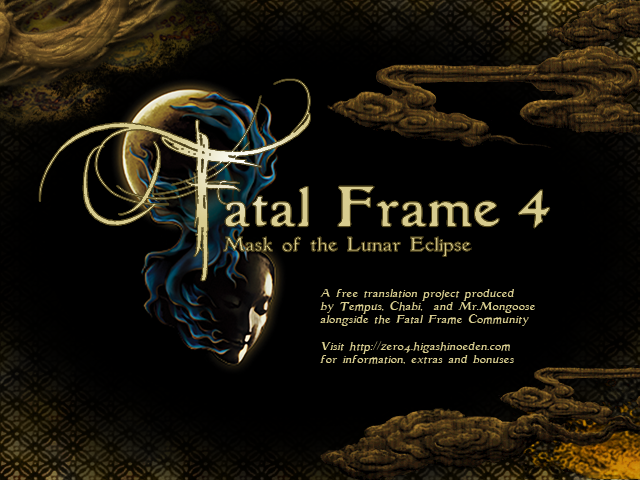
And this is what happens when you go into a volatile situation without all the information." They should have pulled back, they didn't. 13.Ĭoffee's attorney, Adam Chrzan, gave an explanation as to why his client wasn't charged with murder in the case, "We argued successfully, clearly, that there was some overreaction and overreach by the sheriff's department on that raid.

Coffee - who has four felony convictions - faces a maximum prison term of 30 years at his sentencing on Jan. However, he was found guilty of possession of a firearm or ammunition by a convicted felon. The younger Coffee was acquitted of all of the murder charges after claiming he fired in self-defense.
FATAL FRAME 4 ED CRACK
In the elder Coffee's bedroom, deputies said they found marijuana cigarettes, crack cocaine, 10 Hydromorphone pills, and one oxycodone pill. In July 2017, a grand jury cleared SWAT team members of any criminal charges in the fatal raid, and a sheriff's office internal investigation cleared them of any violations of policies and procedures. In January, Woods' mother filed a federal lawsuit for misconduct against the deputies who shot and killed her daughter during the early morning raid. Woods' family said Alteria worked as a pharmacy technician, who was attending Indian River State College, where she was studying to become a pharmacist. Andrew's 21-year-old girlfriend, Alteria Woods, was killed after reportedly being struck by 10 bullets fired by the SWAT team, including one bullet that entered her chest. This difference in outcome should help trauma surgeons recognize that the elderly patient sustaining a pelvic fracture is at increased risk of death.Deputies returned fire with more than a dozen rounds shot towards the bedroom, according to court records. Mortality was significantly greater in the elderly group (12.3% vs 2.3%).Įlderly patients sustaining a pelvic fracture were more likely to have a lateral compression fracture pattern, longer hospital LOS, and die despite aggressive resuscitation. Significantly more of the elderly group had a diagnosis of cardiovascular disease (43.9% vs 10.1%, P <.001) and diabetes mellitus (10.5% vs 2.4%, P <.014). There was no difference in transfusion (elderly = 2.5 +/- 0.7 vs young = 2.0 +/- 0.3 ns) but the elderly group was more frequently admitted to the ICU (elderly = 61.4% vs young = 46.8% P =.065). Lateral compression was the most common fracture pattern in both groups (elderly = 54.4% young = 45.6%). Motor vehicle collision was the most common mechanism of injury (elderly = 68.4% young = 73.8%). The 2 groups differed by gender (elderly = 54.4% females young = 62.5% males) but not frequency of shock, ISS, or AIS for head, chest, and abdomen. Three hundred five patients sustained a pelvic fracture (young elderly ). Statistical analysis was performed using the Student t test, Wilcoxon rank-sum test, multiple logistic regression analysis, and chi-square test with significance set at P <.05. Data retrieval included: demographics, shock (BP or = 55 years).

The purpose of this study was to examine the age-related outcome in patients after blunt pelvic injury.Īll patients admitted with a pelvic fracture during a 5-year period were identified from the trauma registry. The elderly population is currently the fastest growing sector in America.


 0 kommentar(er)
0 kommentar(er)
